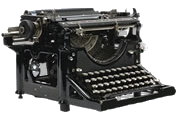A Diagram of Germany’s Only World War I Tank (Almanach Hachette, 1919)
A black and white diagram depicting the interior and exterior of the German A7V heavy tank. Manufactured in the spring of 1918, only twenty were ever known to have existed. Although the illustration depicts only two men, it is said that the tank had a crew of 18 and measured 26 feet, three inches in length and 10.5 feet in width. The A7V had two heavy Maxim machine guns placed within it’s turret, while the tank’s primary weapon was a 57mm gun mounted at the very front (these guns were believed to have been of Russian or Belgian origin). The tank could travel an estimated fifty miles at the top speed of 6 mph; it weighed 32 tons and sported armor plating that was 30mm thick at the bow and 20mm thick all around. The tank’s two 150 horse-power, 4-cylinder water cooled engines were made by Daimler.
A Diagram of Germany’s Only World War I Tank (Almanach Hachette, 1919) Read More »
